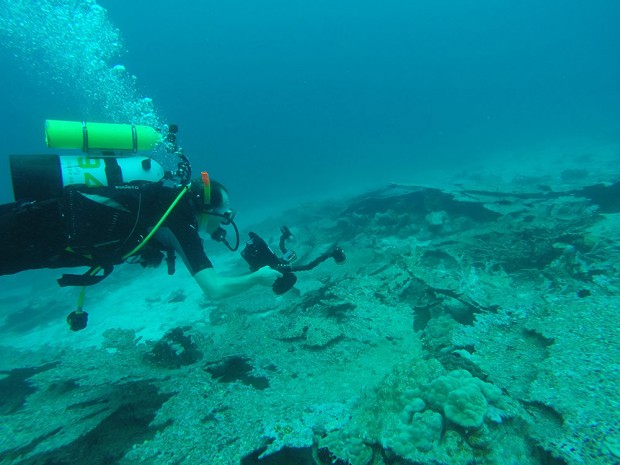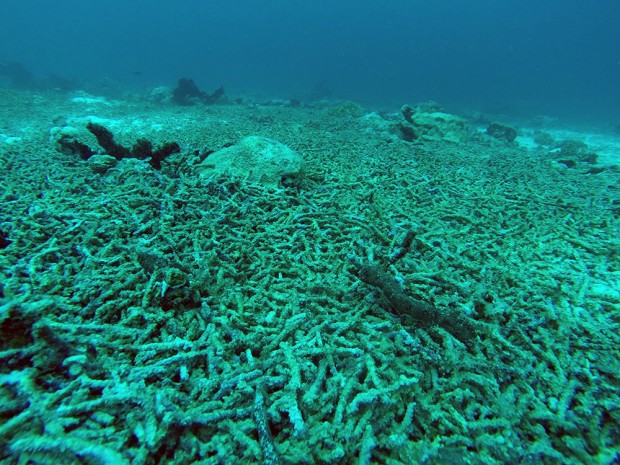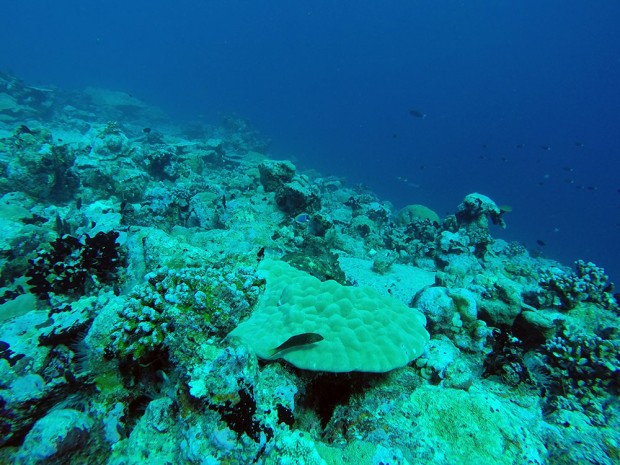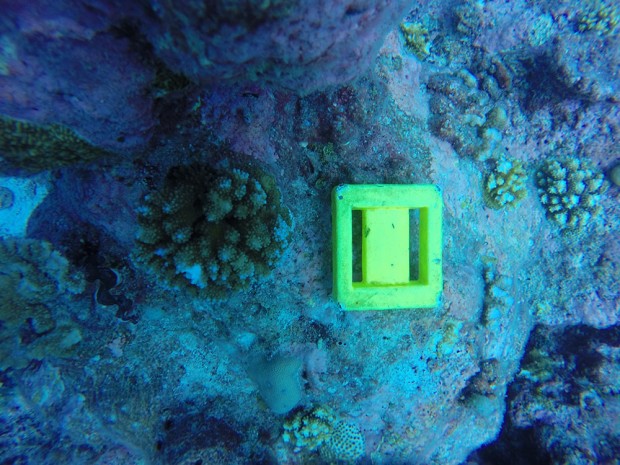Assessing two years of back-to-back reef changes in the Chagos Archipelago
By Dominic Andradi-Brown, University of Oxford
I’ve just returned from two weeks of coral reef surveys in the Chagos Archipelago. While logistically and scientifically the expedition was a great success, the coral reef health surveys we conducted suggested there has been widespread coral death here over the past couple of years.
Last year, during the April expedition, we recorded a coral die off in the shallows, particularly with the large plating and branching Acropora corals dying off that previously dominated these reefs.
The reefs were characterised in the shallows by many large upturned Acropora plates, with the few Acropora colonies still alive but looking heavily diseased.
Many of the other branching corals, such as Porcillopora, were still alive but showing signs of bleaching.
Bleaching, which is caused by high sea temperatures combined with sunlight exposure for a prolonged period of time, doesn’t necessarily kill corals. There are plenty of examples of corals recovering following bleaching events, and in fact these corals that do recover are the focus of research as they may hold the key to coral reef survival through climate change.
The positives from our 2016 trip were there were lots of healthy young corals, called recruits, that had settled onto the reef, offering hope that the reefs of the archipelago could recover.
We left the 2016 expedition slightly apprehensive about what would happen to the reefs next. Would the dead Acropora plates erode down destroying many of the coral recruits? Would the Pocillopora recover following the bleaching?

However, as we got further into surveys we began to notice that the many other branching corals, such as the Pocillopora, that were bleaching as we left last year had now died as well.
In several places we encountered large rubble patches, most likely caused from the erosion and breakdown of the branching corals that had died over the previous two years.

Despite this there are a few glimmers of hope.
Generally the deeper reefs below 20 m depth appeared reasonably healthy, with high coral cover. In the shallows, the remaining living corals (mostly Porites species) seem in good condition and there was no sign of further bleaching in progress while we were there.
Many of the coral recruits we observed last year have survived and grown. As part of our survey work this year we were interested in tracking reef recovery. So we have identified individual young Acropora colonies, measured their surface area and 3D structure to be able to track their growth over the next few years.
There is hope that the reefs of the Chagos Archipelago can recover, as a similar coral die-off happened back in 1998 from which the reefs recovered.
However, the key question is the frequency with which bleaching occurs, and whether there will be time for recovery before the next big bleaching event.
(Image: A healthy Porties colony on the reef) (Image 4: Tracking the size and growth of young coral colonies)
Thanks to the Bertarelli Foundation for funding the Expedition. For updates from when we were in the field, please search for the hashtag #BIOTExp17 on twitter.



